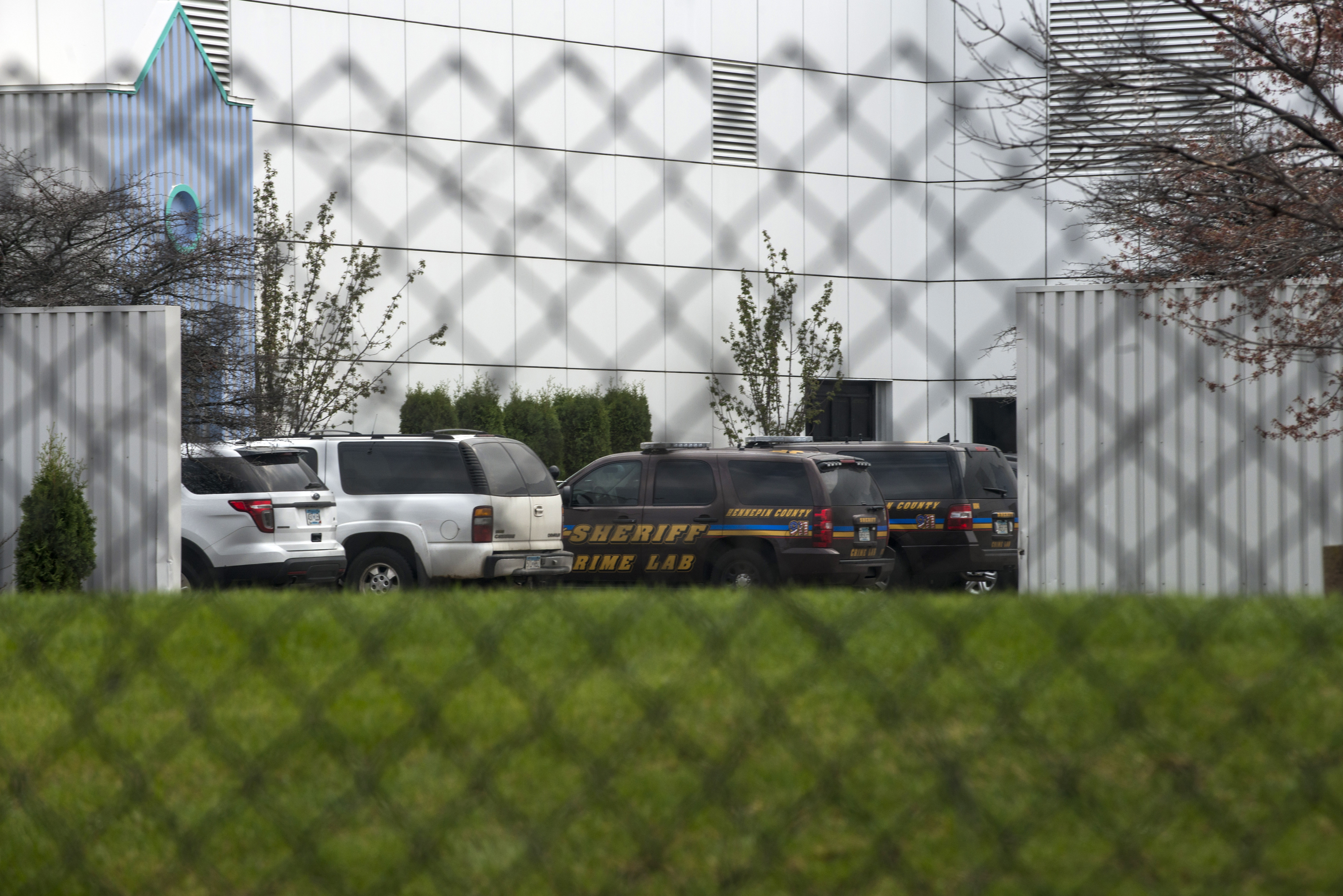
Prince’s autopsy was completed on April 22, and the results were released on June 2. (Getty)
UPDATE: Prince died from “self-administered fentanyl” overdose, according to the autopsy report released by The Midwest Medical Examiner’s Office on June 2. His death was ruled an accident.
The Midwest Medical Examiner’s Office conducted its autopsy of Prince on April 22. Chief Medical Examiner Dr. A. Quinn Strobl performed the autopsy. The music icon was found dead in his Paisley Park home in Chanhassen, Minnesota on April 21 at age 57.
Police continue their investigation into the singer’s death including his use of painkillers. The county sheriff called in the Drug Enforcement Agency for help last month. Prince also had a local physician who was treating him for opioid addiction.
Here’s what you need to know.
1. Prince’s Autopsy Results Show He Died of a Fentanyl Overdose
The Midwest Medical Examiner’s Office released its official autopsy report on June 2. It stated Prince’s death was an accident and due to “fentanyl toxicity” that was “self-administered.” Fentanyl is a synthetic opioid, 50 times more potent than heroin, according to The Associated Press.
The autopsy report also revealed Prince weighed 112 pounds at the time of his death and stood at 5 foot 3 inches. He was found dead wearing a black cap, black shirt, grey undershirt, black pants, black boxer briefs and black socks.
The autopsy for Prince took place at 9 a.m. and was completed at 1 p.m. on April 22. The body was then released to family and cremated at the Cremation Society of Minnesota, overseen by the funeral director, Kevin J. Waterston.
2. The Chief Medical Examiner of the Midwest Medical Examiner’s Office Conducted the Autopsy

Dr. A Quinn Strobl conducted the autopsy on Prince. (MIdwest Medical Examiner’s Office)
Dr. A. Quinn Stobl, who is the Chief Medical Examiner of the Midwest Medical Examiner’s Office, conducted the autopsy on Prince. She has been practicing pathology since she completed her fellowship in 2005. She is board certified in anatomic, clinical and forensic pathology.
The Midwest Medical Examiner’s Office and the Hennepin County Sheriff’s Office are assisting the Carver County Sheriff’s Department in its investigation to understand the circumstances surrounding Prince’s death.
3. Police Found Prince Unresponsive in an Elevator

Vehicles from the Hennepin County Crime Lab parked outside Paisley Park on April 21, 2016 in Chanhassen, Minnesota. Prince died earlier today at his Paisley Park compound at the age of 57. ( Stephen Maturen/Getty)
Deputies from the Carver County Sheriff’s Department responded to a medical call at Paisley Park at 9:43 a.m. on Thursday. They found Prince unresponsive in an elevator and performed CPR, but were unable to revive him. He was pronounced dead on the scene at 10:07 a.m.
The coroner determined his date of death as April 21, but did not specify an exact time. Responding paramedics told staff members and law enforcement at the scene that Prince may have been dead for six hours, according to the Star Tribune.
The cause of death was determined based on the physical autopsy, Prince’s medical and social history and his family’s medical history. Sheriff Jim Olson told press on April 22 that there was “no reason to believe” the singer had committed suicide.
Prince did not leave a will, according to court documents filed by his sister, Tyka Nelson. As a result, Prince’s sister could inherit the massive fortune the pop legend leaves behind.
4. Police Are Continuing Their Investigation into Prince’s Death

Prince performing at the 36th Annual NAACP Image Awards. (Getty)
The Carver County Sheriff’s Office were joined in their investigation by federal authorities including the Drug Enforcement Agency (DEA) in early May. They were focusing their investigation on the painkillers found in Prince’s possession at the time of his death, according to ABC News.
The DEA would determine where the drugs came from and what prescriptions Prince obtained. It’s normal for DEA agents to check those records in death investigations, according to ABC News.
Flying home from his concert in Atlanta on April 14, Prince’s private jet had to make an emergency landing in Moline, Illinois for the singer to be rushed to the hospital. EMTs administered a “save shot” on him after his entourage told the responders that he had taken a Percocet painkiller after his performance, which caused the emergency situation, according to TMZ. The shot was the opioid antidote Narcan.
Prince became more agitated in the days following his emergency stop in Illinois. At 6 a.m. on the day before his death, a staff member called someone in New York who had recently worked with Prince, according to the Star Tribune. Later that same day, the musician was taken to a local hospital and given intravenous treatment.
Prince was taking painkillers for a hip problem that has bothered him for over a decade. Sources told TMZ that he had corrective surgery in 2010, but multiple reports say he needed a double-hip replacement. Under most circumstances, the surgery would have required a blood transfusions, which are against his Jehovah’s Witness beliefs. The autopsy report showed he had a scar on his left hip and another scar on his lower right leg, but didn’t specify what were the causes of the scars.
Attorney Michael Padden, who represented Prince’s late half-brother and half-sister, Duane and Lorna Nelson, told the Star Tribune and authorities that the siblings informed him more than a decade ago that Prince has “substantial” drug problems with Percocet and cocaine. Padden said they “both were really concerned it would end his life prematurely.”
5. A Twins City Physician Was Treating Prince for Opioid Addiction
Prior to his death, a Twins City physician was treating Prince for withdrawal symptoms from opioid addiction, according to the Star Tribune. The same doctor made a house call the night before the singer was found dead.
Earlier, members of his staff reached out to Phaedra Ellis-Lamkins, an environmental and labor activist who is credited for helping Prince recover his catalog from Warner Bros. She called Dr. Howard Kornfeld, an opioid addiction specialist in Mill Valley, California, less than 12 hours before Prince’s death. Since he couldn’t fly to Minnesota right away, Kornfeld sent ahead his son, Andrew Kornfeld, who works as a practice consultant at his father’s treatment facility.
The younger Kornfeld arrived to Prince’s home the morning of April 21. He and two Paisley Park staff members found the singer’s body and Andrew made the 911 call, according to the Star Tribune. He was carrying a small amount of buprenorphine, an opioid pain medication, to give to Prince, but he was never able to administer it.





Comments
Prince Autopsy Report: 5 Fast Facts You Need to Know